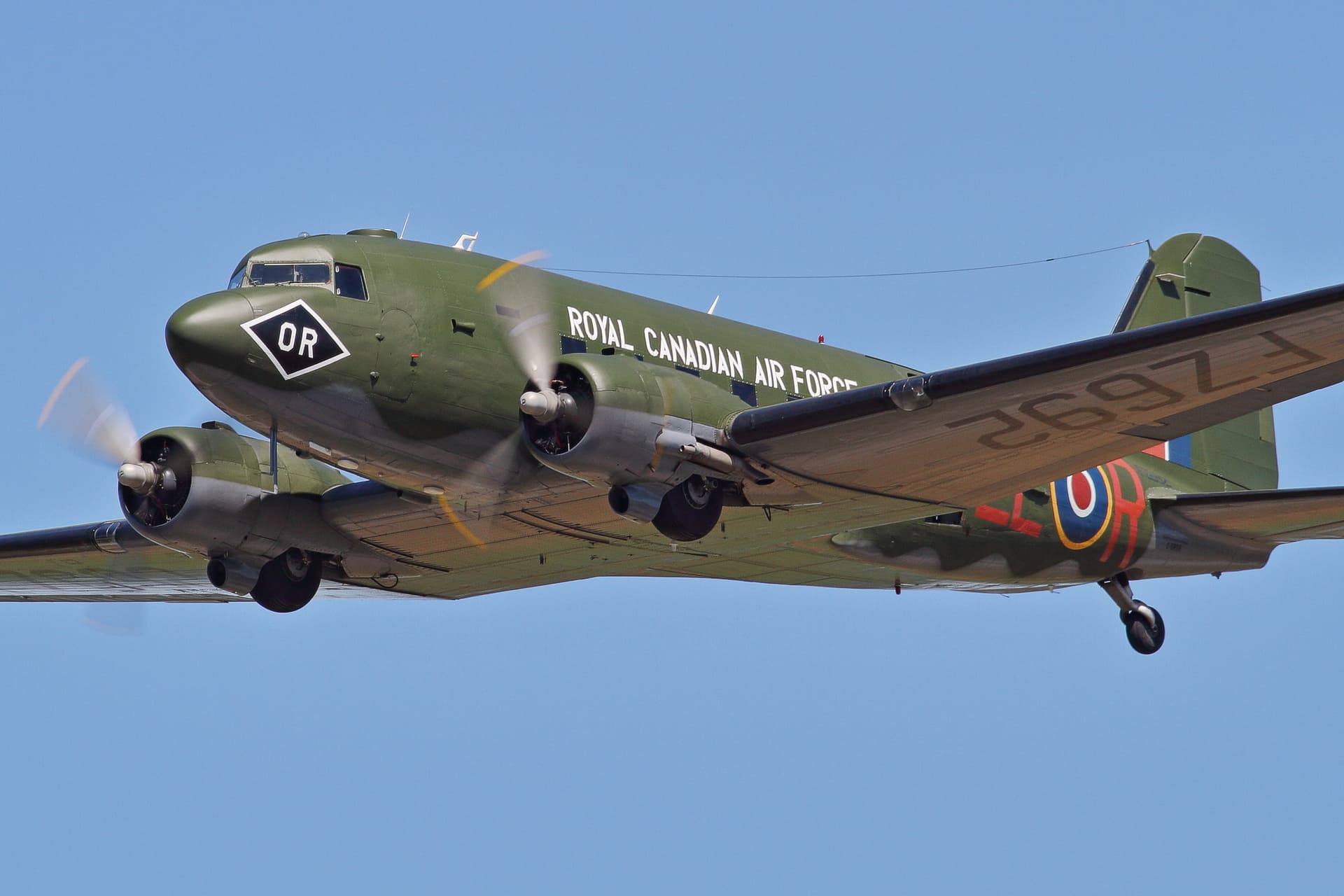The Douglas C-47 Dakota, also known as the DC-3, is a legendary transport aircraft with a rich history dating back to its introduction in the 1930s. Manufactured by Douglas Aircraft Company, the C-47 played a pivotal role during World War II, serving as a troop transport, cargo carrier, and medical evacuation aircraft. It was instrumental in the Allied invasion of Normandy on D-Day, June 6, 1944, dropping paratroopers behind enemy lines and towing gliders filled with troops and supplies.
The C-47 was powered by two Pratt & Whitney R-1830 Twin Wasp radial engines, providing reliable performance and a cruising speed of around 333 kilometers per hour. Its durable construction and versatile design made it well-suited for a wide range of missions, earning it a reputation as one of the most successful aircraft in aviation history. After the war, many C-47s were converted for civilian use, where they continued to serve as passenger and cargo aircraft, showcasing their enduring legacy and timeless design.
C-47 DAKOTA

General characteristics
- Crew: 3-4 (pilot, co-pilot, navigator, radio operator)
- Capacity: Up to 28 troops or 2,700 kg (6,000 lbs) of cargo
- Length: 19.66 m (64.4 ft)
- Wingspan: 28.96 m (95 ft)
- Height: 5.16 m (16.9 ft)
- Empty weight: 7,094 kg (15,635 lb)
- Maximum takeoff weight: 11,430 kg (25,200 lb)
- Powerplant: 2 × Pratt & Whitney R-1830 Twin Wasp radial engines, 895 kW (1,200 hp) each
Performance
- Maximum speed: 370 km/h (200 knots)
- Cruise speed: 333 km/h (180 knots)
- Range: 2,770 km (1,495 nmi)
- Service ceiling: 7,620 m (25,000 ft)
History of the show’s C-47
The C47A-5DK Dakota that will be shown at the airshow was built in 1943 by the Douglas Aircraft Company in Oklahoma City, OK as Construction Number 12295 and sent to the Royal Air Force Transport Command 233 Squadron based at Blakehill Farm in Wiltshire England under the US Lend Lease Program in 1944.
On the night of June 5, 1944 as part of Operation Tonga in support of the D-Day Invasion FZ692 was one of the last of thirty 233 Squadron aircraft to take-off at 23:16 hours to drop units of the British 6th Airborne Division at Drop Zone K near Escoville at 01:00 hours to help secure the eastern flank of the invasion area. On the night of June 6, 1944 as part of Operation Rob Roy in support of the D-Day Invasion FZ692 was one of twenty-one 233 Squadron aircraft that flew a re-supply mission to drop supplies to the British 6th Airborne Division east of the River Orne.
In September 1944 FZ692 was transferred to the newly formed Royal Canadian Air Force 437 Squadron also based at RAF Blakehill Farm in Wiltshire, England after having completed 16 operational missions with RAF 233 Squadron. FZ692 then flew another 208 operational missions with 437 Squadron including Operation Varsity – The Rhine Crossing, the largest airborne operation of the war where on March 24, 1945 FZ692 successfully towed a Horsa Glider with 5 members of the Royal Ulster Rifles, a MB jeep, and a six-pound anti-tank gun to the assigned landing zone.
During World War II, FZ692 transported 298 wounded personnel to medical aid, repatriated 456 POWs, carried over 5,100 passengers including Barnes Wallace and many other dignitaries and VIPs, as well as, transported over 400,000 pounds of supplies and cargo in support of the war effort.
After FZ692 returned to service in Canada in 1946 it served with several military units in several different RCAF transport support, and search and rescue roles, including 424 Transport and Rescue Squadron until it was retired from Squadron service in September 1971.
In March 1975 FZ692 returned to government service with the Canadian Department of Energy, Mines, and Resources as C-GRSB and was modified to conduct environmental, energy surveys, and remote sensing until the program was defunded. In May 2014 the Minister of the Environment the Honourable Leona Aglukkag approved the transfer of FZ692 to the Canadian Warplane Heritage Museum on the understanding that the museum would restore and operate FZ692 in her 1944 RCAF 437 Squadron wartime markings.
After a 5-year restoration the CWH re-dedicated C-GRSB as RCAF FZ692 in 2019 and have proudly displayed and operated this aircraft on passenger flights and other taskings since then.

